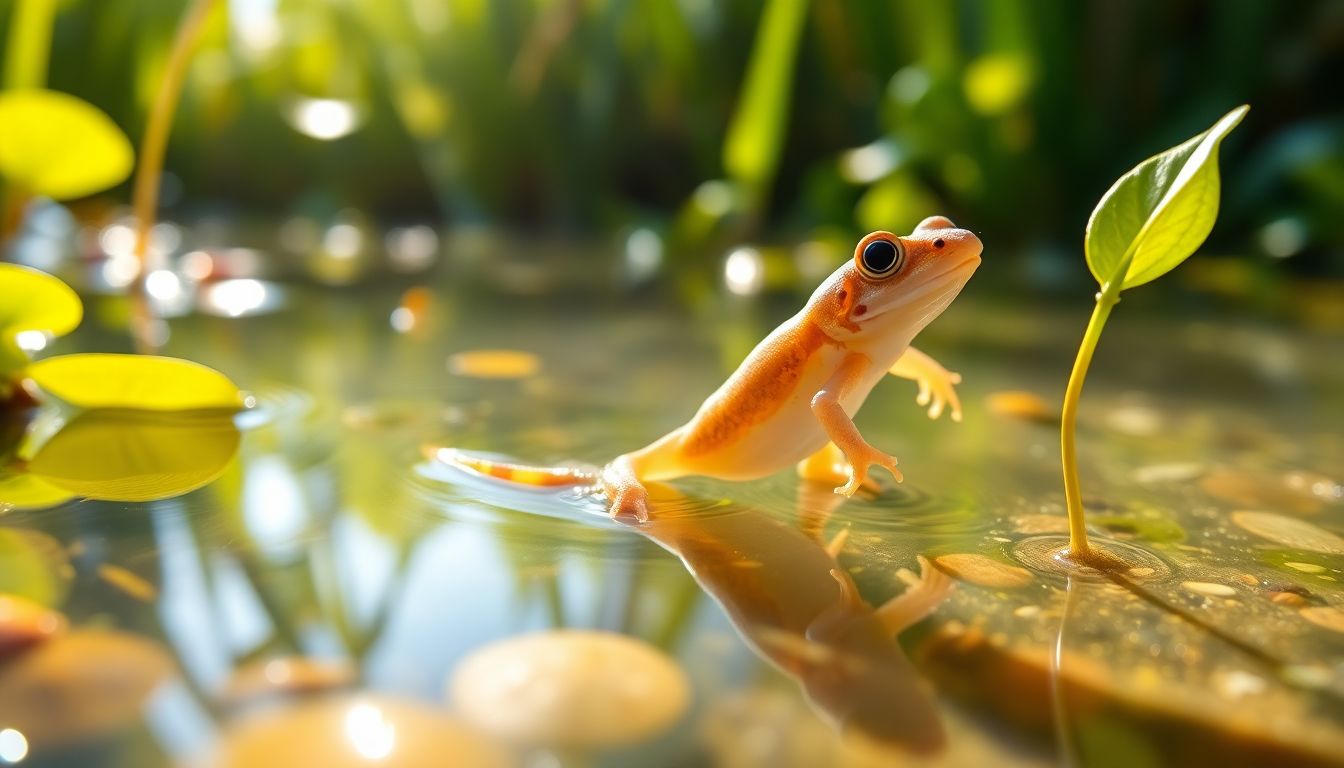
Imagine having the superpower to completely change your body, like a superhero! That's what amphibians do through metamorphosis. It's a mind-blowing transformation that helps them survive. It is how they go from living in the water to living on land. Amphibians are a group of animals that include frogs, salamanders, and caecilians. They all share this amazing ability.
The Amphibian Life Cycle: A Two-Phase Existence
Amphibians have a unique life cycle. It has two main parts. First, they start as aquatic larvae. Then, they grow into terrestrial adults. This change is critical for their survival.
Egg Stage: The Beginning of Life
Amphibian eggs are usually laid in water. These eggs have a jelly-like coating. This coating protects them. It also keeps them moist. Different types of amphibians have different ways to lay eggs. Some lay them in large groups. Others lay them one by one. Some even guard their eggs!
Larval Stage: Life in the Water
The larval stage is when amphibians live in the water. A tadpole is a common example. They breathe with gills. They swim with fins. Most eat plants during this stage. The larval stage can vary. It depends on the type of amphibian. Salamander larvae look a bit like small adults. They still have gills.
Metamorphosis: The Turning Point
Metamorphosis is when big changes happen. It is a distinct phase. It's when the amphibian changes from a larva to an adult. Hormones trigger this amazing shift. These hormones act like switches. It turns on different genes. Those genes control how the body changes.
Hormonal Orchestration: The Science Behind the Shift
Hormones control metamorphosis. The endocrine system releases them. This system is like a command center in the body. It makes sure everything happens in the right order.
Thyroid Hormones: The Master Regulators
Thyroid hormones are very important. T3 and T4 are the main ones. They start and control metamorphosis. These hormones tell cells what to do. They speed up some changes. They slow down others.
Prolactin: Balancing Act
Prolactin is another hormone. It balances the effects of thyroid hormones. It helps amphibians control water balance. This is important as they move to land. Prolactin makes sure they don't dry out too fast.
The Incredible Physical Transformations
During metamorphosis, amphibians change a lot. It's like they are rebuilding their bodies. These changes let them live on land. Frogs show some of the most dramatic changes.
From Gills to Lungs: Breathing Revolutionized
One big change is how they breathe. Larvae use gills to get oxygen from the water. As they grow, they develop lungs. Lungs let them breathe air. The gills slowly disappear. This is a big step.
Tail Regression: A New Form Takes Shape
Frogs lose their tails during metamorphosis. This is called tail resorption. Special cells break down the tail tissue. This process is programmed cell death. The body reuses the tail's materials.
Limb Development: Preparing for Terrestrial Movement
Limbs grow during metamorphosis. These legs help them move on land. They can walk. They can hop. They can even climb. The limbs start as small buds. They grow bigger and stronger over time.
Dietary Shift: Adapting to New Food Sources
Tadpoles mostly eat plants. Adult amphibians eat meat. Their mouths and digestive systems change. They adapt to eating insects and other small animals. Their tongues may become sticky. This helps them catch prey.
Environmental Factors and Metamorphosis
The environment affects metamorphosis. Things like temperature and water quality can have an impact.
Temperature: A Key Influence
Temperature affects how fast metamorphosis happens. Warmer temperatures can speed it up. Colder temperatures can slow it down. If it's too cold, metamorphosis might not finish.
Water Quality: A Critical Factor
Clean water is needed for metamorphosis. Pollution can harm amphibians. Toxins can mess up their development. Some pollutants act like hormones. This can confuse the process.
Habitat Availability: Space to Grow
Amphibians need a good place to live. They need space to grow. They also need access to food and water. Losing habitat makes it harder for them to finish metamorphosis.
Conservation Concerns: Threats to Amphibian Metamorphosis
Many things threaten amphibians. These threats can affect metamorphosis. This puts their populations at risk.
Habitat Loss and Fragmentation
Losing habitat is a big problem. When forests and wetlands disappear, amphibians lose their homes. Fragmentation also hurts. It divides habitats into small pieces. This makes it hard for them to move around.
Climate Change: Altering the Environment
Climate change is also a threat. It changes temperature and rainfall. This can affect when amphibians breed. It can also affect how fast they grow. Some areas may become too dry.
Pollution and Disease: Compromising Health
Pollution can weaken amphibians. It makes them more likely to get sick. Diseases can spread quickly. These problems can stop metamorphosis. They can even kill them.
Conclusion
Amphibian metamorphosis is a remarkable process. It's complex and important. Amphibians face many threats. Habitat loss, climate change, and pollution all hurt them. We must help protect these amazing creatures. Learn more about amphibians. Support conservation efforts. Together, we can make a difference.











0 Comments